Introduction
Java application development is a precise adventure that begins with an innovative idea and ends with a fully-functional software product. This journey involves market research, defining key features, and creating a comprehensive plan. The development process is guided by a chosen methodology, tailored to the project's unique requirements.
The integration of AI and ML is redefining Java application development, enhancing adaptability and user responsiveness. However, challenges such as software risk analysis must be addressed to ensure project success. As the future trends in software development promise transformation, efficiency and innovation remain paramount in the constantly evolving landscape of Java application development.
Understanding the Java Application Development Process
The creation of Java applications is a precise adventure starting with the genesis of an idea and culminating in the deployment of a fully-functional software product. It begins with the spark of innovation, where market research and target audience analysis lead to the definition of key features and functionalities. This initial phase is critical for ensuring the concept meets a real-world need and sets the stage for what comes next.
With a validated idea in hand, a comprehensive plan is laid out, detailing the project's scope, timelines, and resources. This plan must strike a balance between being visionary and pragmatic, providing a clear direction for the development journey ahead. As we progress, the development process itself is guided by a chosen software development methodology—a structured, systematic approach that encompasses planning, designing, implementing, testing, deploying, and maintaining the software.
Methodologies are not one-size-fits-all; they are carefully selected based on the project's unique requirements, goals, and constraints. They serve as a scaffold, offering process guidelines and defining roles and responsibilities while specifying the artifacts that need to be produced. This structured path ensures that every phase of the project, from initiation to completion, is executed with precision and efficiency.
Moreover, the integration of Artificial Intelligence (AI) and Machine Learning (ML) into this process is redefining the landscape, embedding these advanced technologies into the fabric of our applications. They enhance the software's ability to adapt and respond to user interactions, demonstrating a significant shift in how we approach Java application development.
This approach is not without its challenges, though. Software risk analysis has become an indispensable part of the process, scrutinizing the project's context and objectives to identify potential pitfalls that could derail progress. Risks can emerge from various sources, and addressing them early is key to maintaining the project's integrity and success.
As we look to the future, the trends shaping software development promise to further transform how we build digital experiences. From the creativity that sparks an idea to the functionality embedded within the code, developers are the architects of tomorrow's technologies. The journey through the Java application development landscape is one of constant evolution, where efficiency and innovation are paramount.
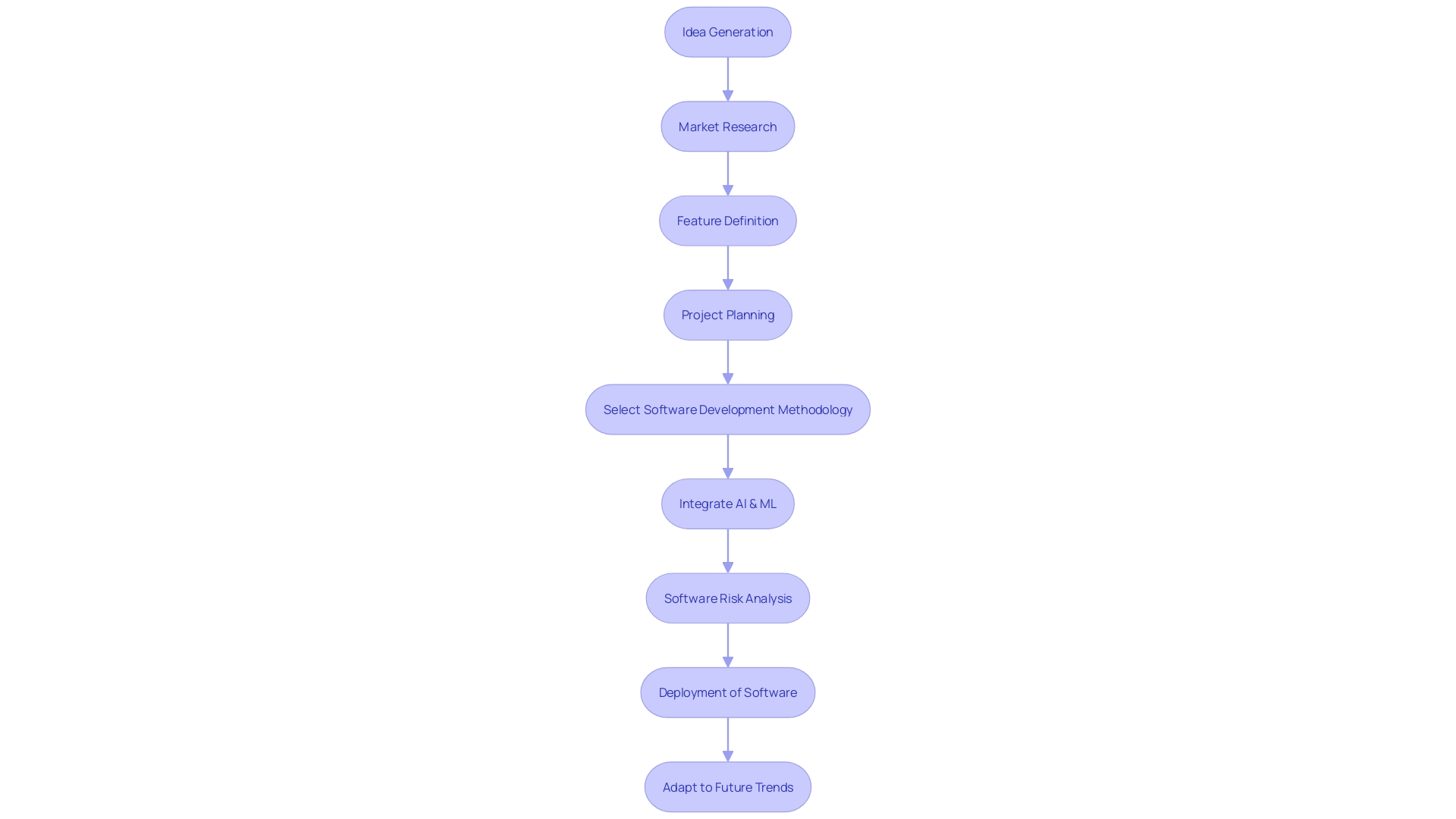
Key Principles of Rapid Application Development (RAD)
Rapid Application Development (RAD) stands as a beacon for developers who aim to deliver robust Java applications swiftly and efficiently. By embracing RAD principles, programmers can navigate the complexities of software creation with agility, adaptability, and a user-centric focus. This methodology is founded on iterative cycles that allow for continual refinements and adaptations based on user feedback.
RAD's emphasis on prototyping serves as a critical tool in early detection and mitigation of software risks, which can range from technical challenges to shifting requirements. By quickly producing workable models of the application, developers can identify potential issues early on, ensuring that project objectives, schedules, and quality standards remain on target.
In the sphere of Java development, RAD synergizes with microservices architecture to bolster the independence and scalability of services. Each component can be honed to perfection through iterative feedback and fine-tuning. Furthermore, news from the tech industry suggests that projects like Radius, although in nascent stages, are seeking to simplify cloud application complexities, which aligns with RAD's objectives to streamline and demystify the development process.
The methodology's structure offers a clear pathway from conception to completion, delineating roles, responsibilities, and deliverables. This clarity propels teams towards efficiency and high-quality output, as evidenced by the expanding landscape of development, where a broader range of professionals are now contributing to software projects.
Statistical insights highlight the exponential growth in the developer community, suggesting a surge in software engineering's influence across various sectors. The democratization of development, aided by advancements in AI, holds the promise of an economic transformation through the automation of non-tech industries.
As the boundaries between design and engineering blur, the collaborative efforts to create digital experiences that resonate with users become paramount. This fusion of creativity and technical prowess is critical in today's technology-driven businesses, where every company is, in essence, becoming a software company.
Phases of Rapid Application Development
Java-based Rapid Application Development (RAD) unfolds through distinct stages, each with its own set of goals and outputs. At the outset, Software Risk Analysis is paramount, identifying potential setbacks that could affect project timelines, budgets, or quality. This proactive step involves a thorough examination of technical challenges, fluctuating requirements, and human elements that could derail progress.
Following risk analysis, the methodology's core phases take shape. Initially, the focus is on creating a minimal viable product—building software in the simplest form and progressively refining it. This approach is rooted in the philosophy that less is often more, and simplicity should be a guiding principle. As Sharat Chander from Oracle noted, the vibrancy of Java is a testament to the community's continuous effort, a sentiment echoed throughout the Java ecosystem, including events like the JavaCro conference.
The development process is not just about adhering to a set sequence of actions. It's about creating an agile environment that encourages innovation and tailors solutions to business needs—moving away from traditional, rigid methodologies. For instance, employing the command 'gradlew alltests' can execute a comprehensive suite of tests, ensuring that the software's functionality and performance are up to the mark at every stage.
Ultimately, the methodology is not fixed but adaptive, providing a scaffold for the journey from concept to completion. It clarifies roles, responsibilities, and expected deliverables, ensuring that every phase of development is aimed at producing robust, high-quality software that reflects the evolving culture of Java development and its community's pursuit of excellence.
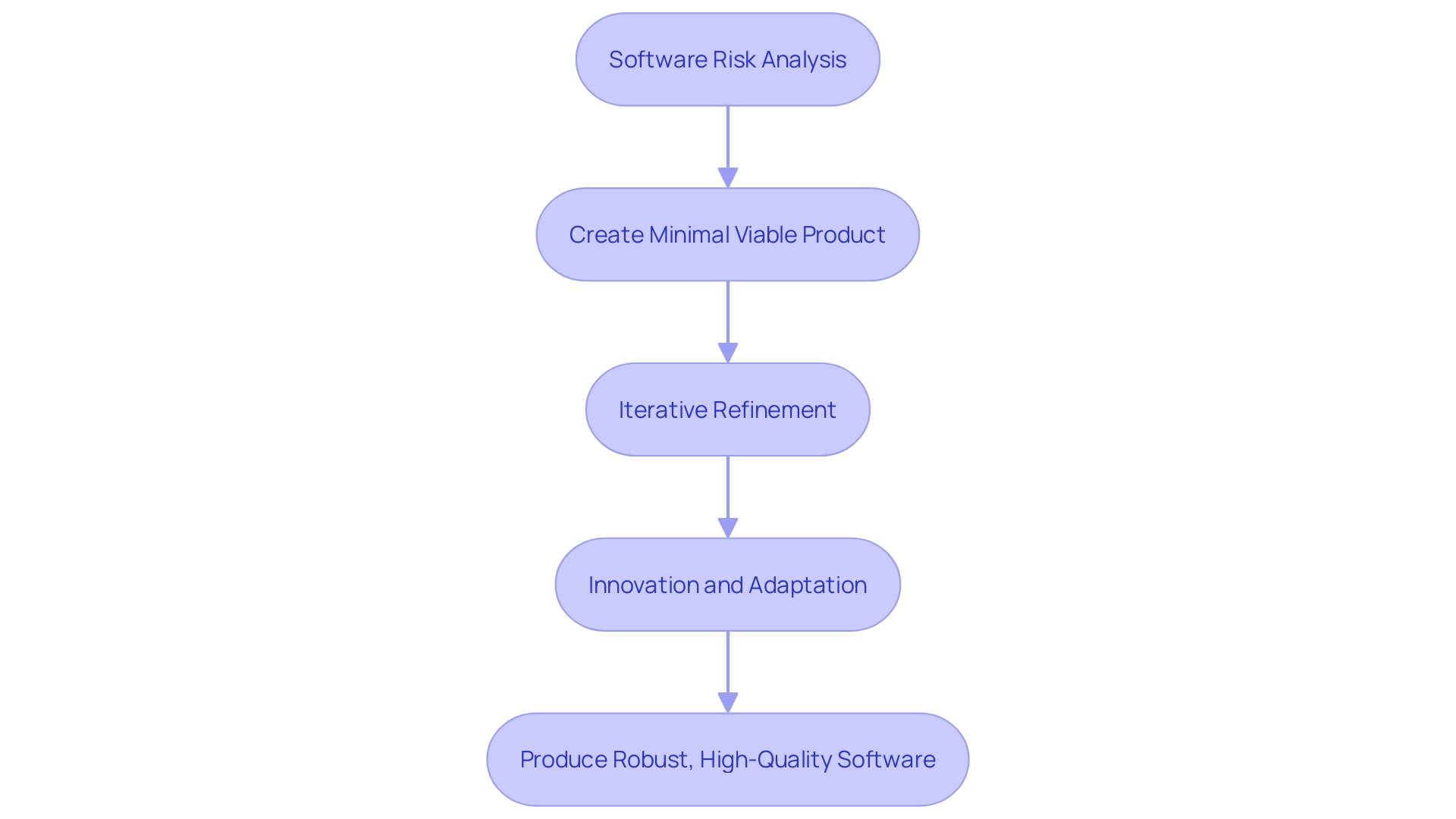
Tools and Frameworks for RAD in Java
The Java ecosystem is constantly evolving to accommodate the increasing demand for efficiency in software development. Rapid application development in Java has been revolutionized by the introduction of Computer-Aided Software Engineering (CASE) tools and the microservices architecture, which structure applications as collections of small, independent services. These methodologies enable developers to work on individual components without affecting the whole system, thus speeding up the development process and improving productivity.
Microservices, with their autonomous design, allow for independent development, deployment, and scaling, which is a significant advantage in today's fast-paced development environment. On the other hand, Java frameworks offer a pre-established set of reusable and standardized components that reduce repetitive coding tasks, leading to faster and more maintainable code. The adoption of frameworks also contributes to the overall architecture of an application by managing common tasks, thus enabling developers to focus on the unique aspects of their projects.
Historically, CASE tools have come a long way since their inception in the late 1960s. They have evolved from simple aids to sophisticated systems with code generation capabilities and user-friendly interfaces. Today, they are an integral part of the software development lifecycle, supporting a variety of programming languages and seamlessly integrating with modern development practices.
Moreover, the State of Developer Ecosystem 2023 report reveals that 77% of developers use AI tools like ChatGPT, and 46% use GitHub Copilot, demonstrating the growing reliance on AI to streamline coding tasks. As the landscape of technology continues to transform, developers are increasingly turning to these advanced tools and methodologies to stay ahead in the competitive field of software development.
Prototyping and Iterative Development in RAD
Rapid Application Development (RAD) thrives on the iterative process, engaging prototypes as a core feature to refine and perfect Java applications swiftly. Prototyping, a preliminary model of the application, is essential for visualizing the functionality of the parking lot system we envisage. It crystallizes the concept, allowing developers and stakeholders to interact with a tangible representation of the system early in the development cycle. This interaction paves the way for immediate feedback, leading to successive refinements.
Best practices in iterative development within RAD suggest starting with clear, basic requirements. For example, defining the parking lot system with an ID, floors, and slots for various vehicle types sets a solid foundation. Such clarity is critical, as it guides the iterative cycles and prototyping phases towards a solution tailored to the project's unique needs.
Real-world applications of RAD and prototyping are evident in recent projects like Radius, despite it being in an early release stage. As a potential CNCF project, it exemplifies the drive to simplify cloud application complexities, resonating with the RAD ethos of streamlined and efficient development processes.
Ted Neward, a seasoned industry professional, advocates for clear and descriptive code names. This best practice aligns with Rad's iterative development, as clear naming conventions facilitate better understanding and collaboration during rapid cycles of revision and improvement.
Ultimately, the success of RAD and iterative development hinges on risk analysis, ensuring that any potential negative impacts on the project's objectives are identified and mitigated. Such methodical evaluation is integral to navigating the technical complexities and resource constraints that might arise, ensuring that each iteration of the prototype brings us closer to a robust, user-friendly parking lot system. Engaging in RAD with these strategies leads to not just a high-quality software product but an efficient and responsive development journey.

Automating Development with CI/CD Pipelines
The fusion of Continuous Integration (CI) and Continuous Deployment (CD) into CI/CD pipelines marks a significant evolution in the Java development landscape. By integrating code changes regularly and automating the deployment process, these pipelines facilitate a swift and reliable software development cycle. The practice of CI, where developers merge code into a shared repository multiple times a day, minimizes integration issues, enabling more frequent testing and less rework. A case in point is the HoloCaust real estate platform, where the use of CI/CD pipelines and AWS expertise led to the creation of a robust product quickly and effectively.
In the real-world scenario, Java web applications necessitate a build stage to produce an executable file, such as a .jar, which includes all code and necessary library dependencies. This is a departure from simpler deployments, such as directly copying files to a server directory, which may suffice for basic tooling websites but is inadequate for compiled languages like Java. The CI/CD process ensures that changes are tested and integrated without the dreaded 'Merge Hell,' where code conflicts can become a nightmare.
Embracing CI/CD isn't just about adopting new tools; it's a shift towards an agile, quality-centric, and collaborative approach to software development. The adoption of CI/CD has been shown to accelerate development cycles significantly, enhance software quality, and streamline collaboration among developers. For Java, maintaining its position in the face of newer languages means embracing such advancements. As evidenced by JetBrains' IntelliJ IDEA, a leading Java IDE, staying current and providing value is critical in a rapidly evolving tech landscape, where Java must continuously prove its worth amidst emerging languages.
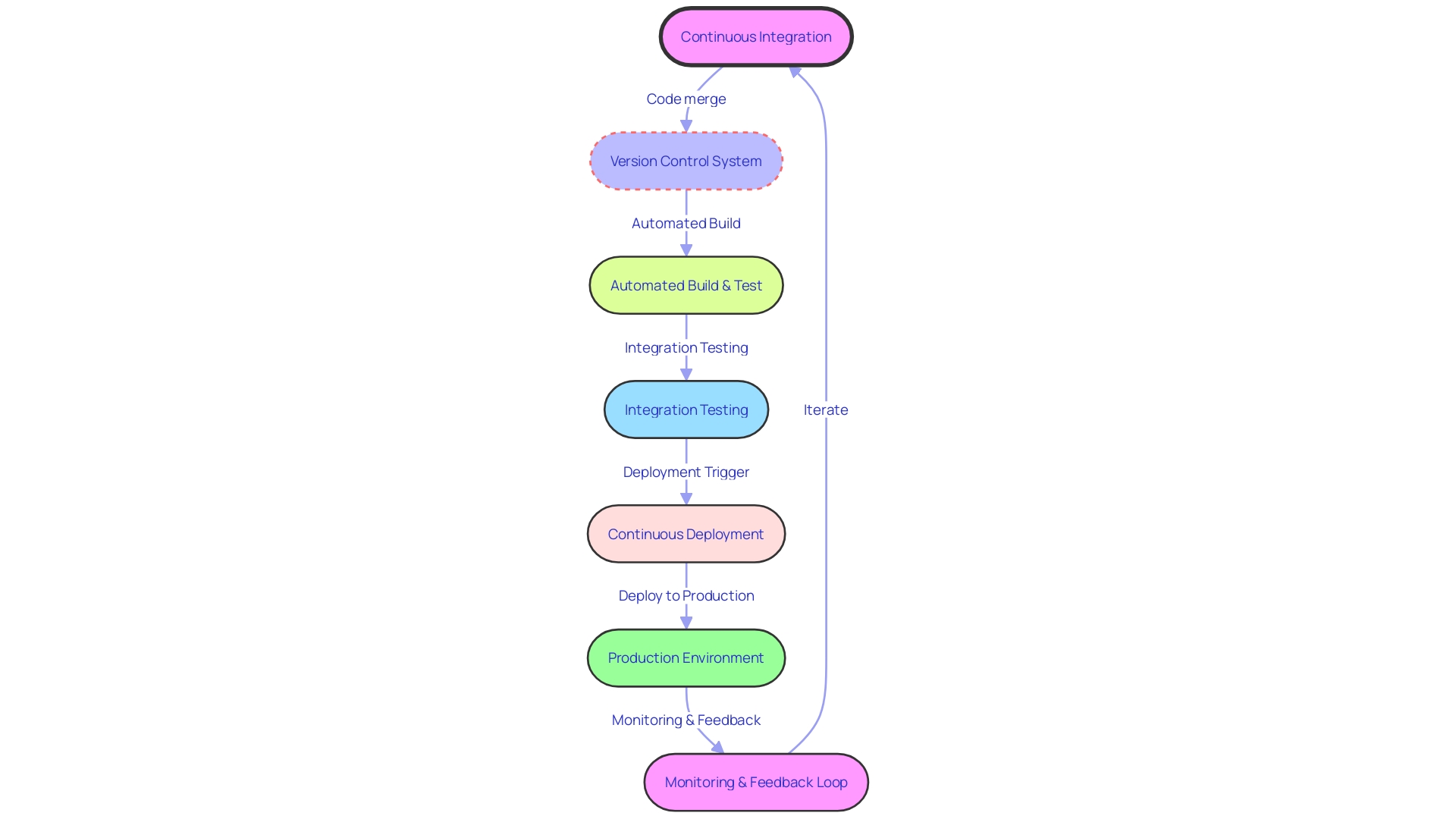
Best Practices for Streamlining RAD in Java
Rapid application development (RAD) in Java is an iterative and adaptive process, emphasizing quick development and prototyping. To boost productivity and efficiency within this paradigm, it's paramount to adhere to certain best practices. Adopting microservices architecture is one such practice; it breaks down an application into a suite of small, autonomous services, each responsible for a discrete business function. This independence allows for concurrent development and deployment, significantly reducing inter-service dependencies and enhancing the agility of the development process. Furthermore, incorporating well-defined software design patterns is crucial. These patterns act as blueprints for solving common design challenges, ensuring code is both efficient and maintainable. Clean code principles are also integral, advocating for clarity, simplicity, and a focus on quality, which directly aligns with the craft of Java programming. Another cornerstone of RAD best practices is the implementation of Continuous Integration (CI). CI facilitates the frequent merging of code changes, enabling early detection of integration issues. This not only streamlines collaboration but also expedites the delivery process. Lastly, test cases are indispensable, providing structured and systematic instructions that assess and ensure the software's functionality and reliability. Leveraging these best practices creates a robust framework that propels Java RAD projects toward success.
Deployment Strategies for Java Applications
Efficient deployment of Java applications is pivotal in delivering top-notch software solutions to users. The deployment process is complex, involving environment configuration, installation, and rigorous testing. With the evolution of software development standards, developers are compelled to regularly refine their projects, making deployment a daily activity. Embracing effective deployment techniques is more important than ever, particularly as businesses seek flexible and scalable systems, which has led to the adoption of microservices and cloud infrastructure.
Deploying in a microservices architecture, especially when services are built with different languages or frameworks, requires a strategic approach to ensure seamless execution and optimal performance. Critical deployment patterns have emerged to address this, catering to various functional and non-functional requirements. For instance, services might be developed in different programming languages or even disparate versions of the same language, which necessitates a nuanced deployment strategy. Each microservice, encompassing elements like UI, databases, and backend components, must be deployed with precision to maintain the integrity of the overall application.
As we move forward into an era where application modernization is indispensable, we must understand that timely and efficient deployment is not just a technical requirement but a business imperative. The strategies we adopt must ensure that applications remain robust, secure, and capable of adapting to the dynamic needs of businesses and their users. This continuous modernization, as highlighted by Arkadiusz Drysch, CTO of Stratoflow, is inherent to software development, emphasizing that there's no such concept as a write-and-forget architecture in our industry.
Testing and Quality Assurance in RAD
Test cases are the foundation of software testing, providing detailed instructions to verify a program's functionality, reliability, and quality. Each test case has a specific purpose—be it validating a feature or finding bugs—and clear objectives that measure a software's performance. Shadow Testing, or parallel testing, is another critical technique where a new system operates alongside the current production system in a 'shadow' environment. This method allows for real-world evaluation without impacting users and is instrumental in mitigating deployment risks.
One compelling case study is M&T Bank, which has recognized the importance of rigorous testing. With the banking industry's shift towards digital services, they have to ensure their software adheres to strict quality and regulatory standards. Faulty software can lead to security breaches and significant financial and reputational losses.
According to the World Quality Report, the focus on industrializing software development and QA activities is increasing, with automation and 'shift-left' approaches being key strategies for achieving high-quality, cost-effective life cycles. The report also points out that learning from cross-industry best practices is vital for improving software quality.
An industry expert has rightly said, 'make it work, make it right, then make it fast.' This emphasizes the importance of first getting the basics right before optimizing for speed, which is essential in quality assurance. Ultimately, the goal is to create software that not only functions correctly but is also robust and efficient, upholding the highest standards of quality.
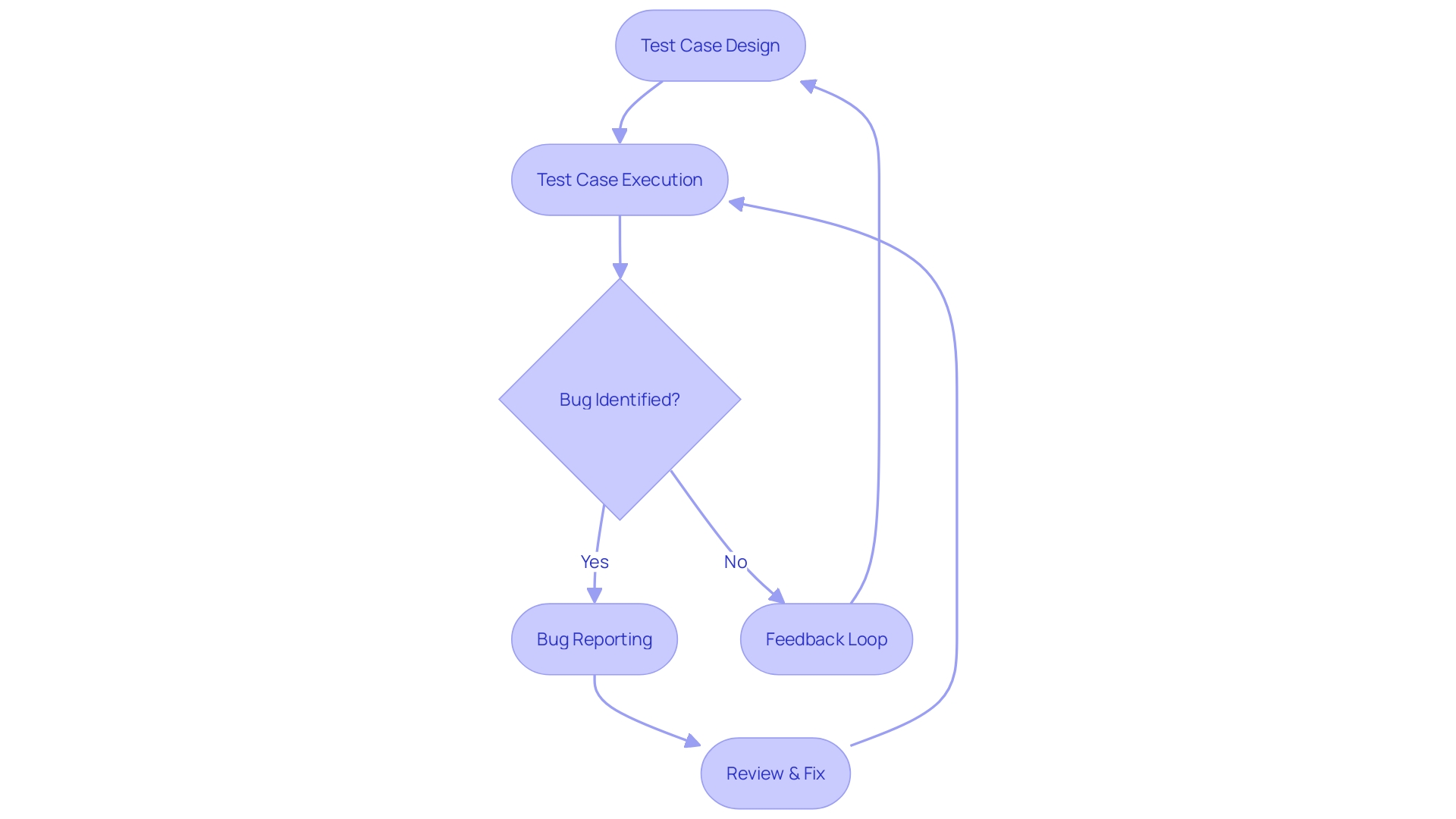
Monitoring and Logging in RAD
Garbage Collection (GC) in Java is the cornerstone of memory management, crucial for the performance and stability of applications, especially in rapid application development (RAD) environments. As developers push for speed and innovation, monitoring and logging become indispensable tools for identifying and resolving memory management issues before they escalate.
Effective GC analysis can prevent memory leaks, which occur when memory is not released after it's no longer needed, potentially causing reduced performance or application crashes. Employing monitoring systems like Jade, which provides insights into the interactions among managed objects, or embracing Application Performance Monitoring (APM) practices, ensures applications remain responsive and available to users.
Moreover, logging serves as the 'black box' of software systems, meticulously recording events and activities. According to industry experts, observability, a key component of which is logging, is essential for managing modern software. Logs provide critical data that can help streamline the exploitation phase of RAD, where the focus shifts to stabilizing and optimizing the chosen solution.
In the rapidly evolving landscape of software development, where open-source tools may suddenly shift to commercial models, maintaining a clear understanding of your Java application's performance through monitoring and logging is more important than ever. These practices not only support the exploration phase of RAD, where diverse solutions are trialed, but they also provide the necessary backbone for the later exploitation phase, enabling a smooth transition to a robust product.
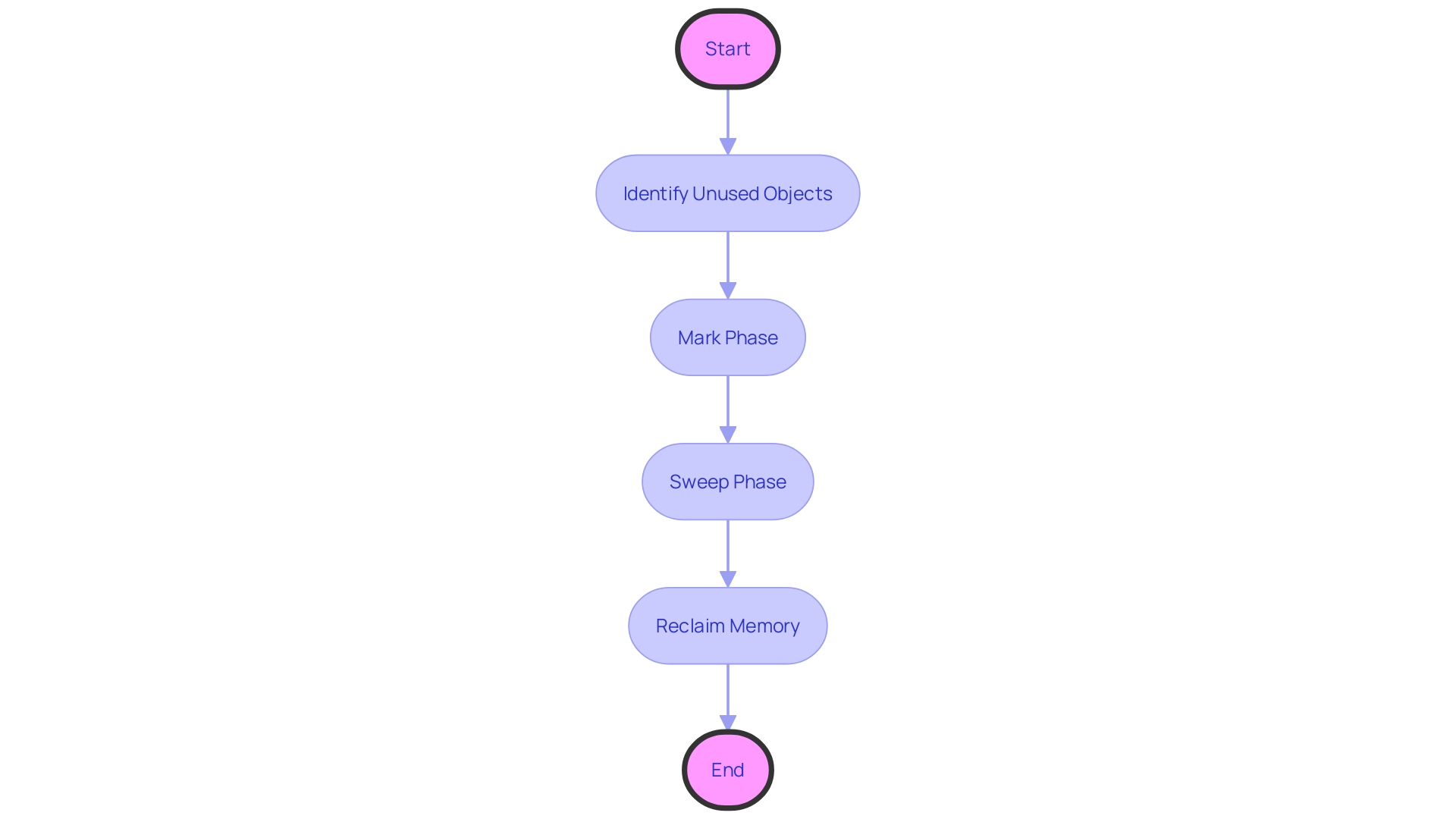
Choosing the Right CI/CD Tools for Java
Choosing the right Continuous Integration and Continuous Deployment (CI/CD) tools is a pivotal step in Java application development, impacting the overall efficiency and success of the project. CI/CD practices are integral to modern software development, enabling developers to merge code changes frequently, automate builds, and streamline software delivery. For Java projects, the CI/CD pipeline must accommodate the unique build and deployment processes, including the creation of executable .jar files with embedded code and necessary libraries.
When selecting CI/CD tools, scalability should be a top consideration. Tools must be able to keep pace with growing project demands and increased build frequencies. Compatibility is another critical factor, ensuring that tools integrate seamlessly with Java environments and the broader technology stack employed by the development team. Moreover, ease of use can significantly influence adoption rates among team members, with intuitive interfaces and clear documentation being invaluable.
Real-world examples, such as the development of the dynamic HalloCasa Real Estate Platform, underscore the importance of choosing CI/CD tools that align with the team's expertise, such as AWS, and contribute to the creation of influential products. Likewise, understanding the CI/CD flywheel—from coding and testing to deployment and monitoring—provides a comprehensive view of how these tools support the development lifecycle.
From a theoretical perspective, CI/CD is not just a set of tools but a transformation in collaborative efforts. Automated integration, part of the CI process, allows developers to submit code changes to a version control system regularly. This approach facilitates early detection of integration issues, fostering a more agile and quality-centric development culture.
With the adoption of CI/CD, organizations can expect improvements in testing practices, quality assurance, and a reduction in issue reports. Studies have shown that CI is associated with better software quality, making the careful selection of CI/CD tools an investment in the robustness and reliability of the end product.
Case Studies and Real-World Applications of RAD in Java
Exploring real-world applications of Java in the rapid application development (RAD) landscape illuminates the tangible benefits and transformative potential for organizations. For instance, the pioneering financial institution M&T Bank, with a rich history dating back to 1856, confronted the digital evolution head-on. In the highly regulated banking sector, where security and compliance are paramount, M&T Bank faced the challenge of maintaining stringent code quality standards. By focusing on establishing organization-wide Clean Code practices, they ensured the maintainability and performance of their software, addressing the costly risks associated with deploying problematic software.
The healthcare sector similarly benefits from a research-first approach to AI model deployment, emphasizing scalability and reliability, especially when patient care is at stake. Embracing such methodologies is crucial for long-term growth and aligning internal stakeholders with a vision for future-oriented development.
Moreover, in the software development sphere, the art and science of writing code are exemplified by the philosophy of clean code. This concept is particularly critical in Java, a prevalent language where the clarity, readability, and maintainability of code ensure not only immediate functional success but also sustainable software health.
In the context of modern software architectures, microservices stand out. Characterized by small, independent services, each responsible for distinct business capabilities, microservices offer the independence necessary for development teams to focus on individual components without disrupting the entire application ecosystem.
The ever-evolving tech landscape sees initiatives like Radius, aimed at simplifying cloud complexity. Radius exemplifies the industry's need for tools that enable developers to specify required resources while allowing operators to determine their provision, supporting a multi-cloud approach and enhancing the separation of concerns between infrastructure and development.
These examples underscore the importance of strategic approaches in software development, from clean code practices to architectural choices like microservices, which collectively drive efficiency, reliability, and adaptability in Java-based RAD environments.
Future Trends and Best Practices in RAD
Rapid application development (RAD) in Java continues to be revolutionized by emerging trends and practices. For instance, consider the case of M&T Bank, a venerable institution with a 165-year history, grappling with the challenges of digital transformation. The bank's proactive approach to adopting Clean Code standards across its development team underscores the industry's need for high-quality, maintainable, and performant software. This is especially true in a sector where security breaches or compliance failures can have severe consequences.
The evolution of RAD is also evident in the shift away from traditional, rigid methodologies like the waterfall model to more flexible and iterative approaches. Agile practices prioritize business needs and customer value, encouraging developers to build software in the simplest way possible and to invest time in thorough planning and cultural improvement.
Moreover, the software development landscape is being shaped by an emphasis on both product growth and quality maintenance. The analysis of commit patterns reflects developers' dual focus on adding new features to drive product appeal while simultaneously addressing bugs to ensure a seamless user experience.
The adoption of microservices architecture is another trend gaining traction in RAD for Java. Microservices promote the development of small, independent services, each responsible for specific business capabilities. This architectural style enhances autonomy and allows for more granular scaling and development.
In the context of API-First Development, the significance of APIs is paramount. They serve as connectors between different software applications, enabling seamless data exchange and integration. This approach places APIs at the forefront of the development process, fostering innovation and interoperability.
Finally, application modernization efforts are crucial for transforming existing software to meet modern standards of functionality, performance, and user experience. Whether through rehosting, refactoring, rearchitecting, or replacing, modernization initiatives are driven by the need to stay competitive and satisfy changing user needs.
As developers embrace these trends, they not only optimize their practices but also contribute to the creation of robust, high-quality, and user-centric software solutions, ensuring that Java remains at the forefront of RAD.
Conclusion
Java application development is evolving with the integration of AI and ML, enhancing adaptability and user responsiveness. Efficient and innovative approaches, such as RAD principles and microservices architecture, drive productivity and collaboration. Choosing the right tools, like CASE tools and Java frameworks, streamlines development and improves efficiency.
CI/CD pipelines accelerate development cycles, enhance software quality, and foster collaboration.
Streamlining RAD in Java involves best practices such as microservices architecture, software design patterns, and CI. Test cases and quality assurance ensure software functionality and reliability. Strategic deployment strategies, monitoring, and logging optimize performance and identify potential issues.
Choosing the right CI/CD tools is crucial for success in Java application development, considering scalability, compatibility, and ease of use. Real-world case studies demonstrate the benefits of RAD across industries, driving efficiency and adaptability.
In conclusion, embracing RAD principles, utilizing the right tools, and staying current with emerging trends enhance efficiency and innovation in Java application development. The integration of AI and ML improves adaptability, while microservices architecture fosters collaboration. Best practices, like CI and quality assurance, ensure software functionality and reliability.
Strategic deployment strategies and monitoring optimize performance. By embracing these principles and practices, Java developers can create robust, user-centric software solutions in the ever-evolving landscape of application development.
Frequently Asked Questions
What is the main focus of the Java application development process?
The Java application development process focuses on transforming an idea into a fully-functional software product, starting from market research and audience analysis to deploying the product.
What role does a software development methodology play in the Java application development process?
A software development methodology provides a structured, systematic approach that guides all phases of the development process, from planning and designing to testing and maintenance, ensuring precision and efficiency.
How are AI and ML integrated into the Java application development process?
AI and ML are embedded within applications to enhance their adaptability and responsiveness to user interactions, representing a significant shift in the development approach.
Why is software risk analysis essential in the Java application development process?
Software risk analysis is crucial for identifying potential pitfalls early in the process, which helps in maintaining the project's integrity and success.
What is Rapid Application Development (RAD) in the context of Java?
RAD is a methodology that promotes swift and efficient delivery of robust Java applications through iterative cycles, continual refinements based on user feedback, and a focus on prototyping.
How does RAD benefit Java application development?
RAD benefits Java application development by facilitating the quick identification of issues through prototyping, supporting microservices architecture, and aligning with initiatives like Radius to simplify cloud complexities.
What are the phases of Java-based RAD?
The phases of Java-based RAD include Software Risk Analysis, creating a minimal viable product, and refining it iteratively to tailor solutions to business needs.
What tools and frameworks support RAD in Java?
Tools like Computer-Aided Software Engineering (CASE) tools, microservices architecture, and Java frameworks support RAD by structuring applications and speeding up the development process.
Why is prototyping important in RAD?
Prototyping is crucial for visualizing the application's functionality, allowing for immediate feedback and successive refinements during the development cycle.
What is the significance of CI/CD pipelines in Java development?
CI/CD pipelines integrate code changes regularly and automate the deployment process, enabling a swift and reliable software development cycle for Java applications.
What best practices should be followed for streamlining RAD in Java?
Best practices include adopting microservices architecture, employing software design patterns, following clean code principles, implementing Continuous Integration, and creating structured test cases.
How is the deployment of Java applications managed efficiently?
Efficient deployment involves configuring environments, installing software, and extensive testing, with a focus on microservices and cloud infrastructure to ensure flexible and scalable systems.
What is the role of testing and quality assurance in RAD?
Testing and quality assurance involve creating detailed test cases to verify functionality and quality, using techniques like Shadow Testing to evaluate the software without impacting users.
Why are monitoring and logging critical in RAD?
Monitoring and logging are essential for identifying and resolving issues, such as memory management problems, and for maintaining performance and stability in RAD environments.
How do you choose the right CI/CD tools for Java projects?
When choosing CI/CD tools, consider scalability, compatibility with the Java environment, ease of use, and the ability to support a quality-centric development culture.
Can you provide real-world examples of RAD in Java?
Real-world examples include M&T Bank's adoption of Clean Code practices and the healthcare sector's scalable AI deployment. These cases highlight the importance of high-quality, adaptable software in various industries.
What are the future trends and best practices in RAD for Java?
Future trends include a move towards agile and iterative methodologies, microservices architecture, API-First Development, and application modernization to meet modern standards and changing user needs.




